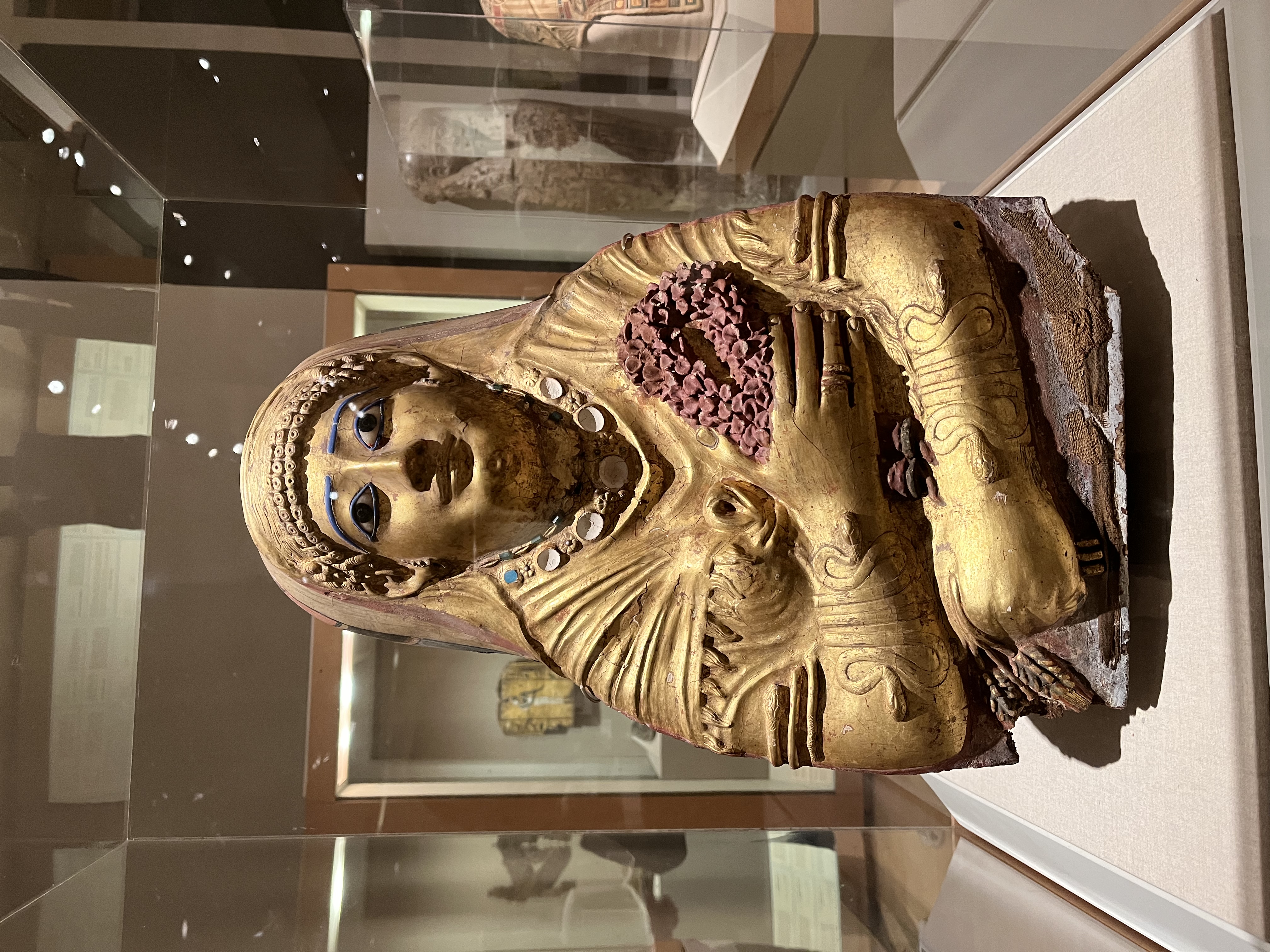A gilded cartonnage intended to be slipped over a mummy’s head; a woman wearing a shawl, along with a headdress, a curly updo, hoop earrings and several necklaces (some of which are detailed with green or blue paint; one of the necklaces has flower beads), as well as serpent armlets and a serpent ring. Her eyes and eyebrows are lined in blue. She holds flowers in one of her hands, which are painted over in mauve, whereas the other holds wheat. The cartonnage contains only the bust of the woman.
What do you see going on in this work of art? Is there a story depicted?
Considering that this is supposed to be used for a mummy, I believe this is symbolic and must be in some way representative of life, like well wishes to honor someone in death.
Unlike other statues, whose gaze is focused at you, the figure gazes ahead, which along with the flowers she is holding in her hands seems to suggest that she is either parting with someone or awaiting someone. Either of these analogies could be applied to death. Given the Egyptians’ value of the afterlife, this could represent greeting the afterlife and the departure of life.
What different visual elements (ie: line, color, light, proportions, scale, composition, media type etc.) do you notice, and how do they help you make sense of the artwork?
Given that the artwork is mostly gold, any additions of color pop and emphasize any details they are applied to. For example, the fact that the figure’s eyes and eyebrows are lined with blue highlights their expression, namely the longing gaze I described earlier. The necklaces are dotted with color, which also adds detail to the piece and draws attention to her affluent appearance. The description on the case of the piece suggests that this is a representation of the goddess Isis, indicated by the pink flowers, which add a delicate pop of color and bring attention to the fact that she is holding them. Since she is a venerated deity, adding these details and drawing attention to the flowers, which represent her, demonstrates respect and honor to her role in Egyptian society.
What choices do you think the museum made about the object’s display?
Some of the objects in the museum share a display case with other artworks. However, this piece has a case of its own. I believe that this is because it is a distinct example of what it is intended to represent, namely how Isis is shown specifically pertaining to the afterlife, considering that there are other artworks of Isis shown in shared display cases. Shared cases are usually intended to show several examples of related artworks, a series of the same story, if you will. I can thus conclude that this piece was one of its kind.
Group Members
| Name (first and last) | Campus | Seminar 1 Professor |
|---|---|---|
| Victoria Kachanov | Hunter College | Sylvia Tomasch |


